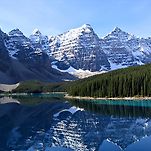<div class="figure-img" data-ke-type="image" data-ke-style="alignCenter" data-ke-mobilestyle="widthOrigin"><img src="https://t1.daumcdn.net/cafeattach/1WdXn/1126a524e4635145df5ffc18602ffaef7fcf0f82" class="txc-image" data-img-src="https://t1.daumcdn.net/cafeattach/1WdXn/1126a524e4635145df5ffc18602ffaef7fcf0f82" data-origin-width="260" data-origin-height="194"></div><p>-&#160;대서양스페이드피시&#160;Atlantic&#160;spadefish <br>.&#160;학명;&#160;Chaetodipterus&#160;faber <br>.&#160;서식지;&#160;수심45미터,&#160;따뜻한&#160;물의&#160;연안이나&#160;강의&#160;바닥에&#160;큰&#160;떼로&#160;서식 <br>.&#160;통명;&#160;대서양스페이드피시 <br>.&#160;특징;&#160;푸르스름한&#160;검정색&#160;막이&#160;있는&#160;지느러미에서&#160;종명이&#160;유래한&#160;가장&#160;큰&#160;도미 <br>.&#160;먹이와&#160;요리법;&#160;회로,&#160;조리하여&#160;다양하게&#160;식용가능 <br>1&#160;학명과&#160;서식지 <br>-&#160;학명;&#160;Chaetodipterus&#160;faber <br>-&#160;서식지 <br>.&#160;온도와&#160;깊이;&#160;수심19미터,&#160;따뜻한&#160;물의&#160;연안이나&#160;강어구의&#160;바닥 <br>.&#160;지역;&#160;서대서양,&#160;매사추세츠부터&#160;브라질까지 <br>Spadefish&#160;are&#160;distinctively&#160;shaped&#160;members&#160;of&#160;the&#160;Ephippidae&#160;family&#160;of&#160;mainly&#160;tropical&#160;and&#160;subtropical&#160;species.&#160;Their&#160;bodies&#160;are&#160;very&#160;flattened&#160;and&#160;nearly&#160;as&#160;deep&#160;as&#160;they&#160;are&#160;long.&#160;The&#160;first,&#160;or&#160;spiny,&#160;dorsal&#160;fin&#160;is&#160;separate&#160;from&#160;the&#160;second,&#160;or&#160;soft-rayed,&#160;dorsal,&#160;which&#160;has&#160;exceptionally&#160;long&#160;rays&#160;at&#160;the&#160;front&#160;and&#160;is&#160;matched&#160;in&#160;size&#160;and&#160;shape&#160;by&#160;the&#160;anal&#160;fin&#160;directly&#160;beneath&#160;it.&#160;The&#160;body&#160;is&#160;silvery&#160;and&#160;has&#160;four&#160;to&#160;six&#160;black&#160;bands&#160;that&#160;may&#160;be&#160;absent&#160;in&#160;older&#160;fish.&#160;The&#160;broad&#160;caudal&#160;fin&#160;has&#160;long&#160;rays&#160;at&#160;the&#160;tips&#160;of&#160;the&#160;upper&#160;and&#160;lower&#160;lobes&#160;so&#160;that&#160;the&#160;fin&#160;is&#160;concave.&#160;The&#160;mouth&#160;is&#160;small.&#160;Juvenile&#160;spadefish&#160;are&#160;black&#160;and&#160;are&#160;known&#160;to&#160;lie&#160;on&#160;their&#160;sides&#160;to&#160;mimic&#160;floating&#160;debris. <br>2&#160;통명 <br>-&#160;영어;&#160;Atlantic&#160;spadefish <br>-&#160;한글;&#160;대서양스페이드피시,&#160;활치목&#160;활치과&#160; <br>3&#160;개요 <br>-&#160;길이;&#160;90센티이내 <br>-&#160;무게;&#160;20파운드이내,&#160;평균&#160;6파운드 <br>4&#160;특징 <br>-&#160;매우&#160;깊고&#160;압축되있는&#160;원반모양의&#160;몸과&#160;뭉툭한&#160;주둥이 <br>-&#160;은색&#160;몸에&#160;불규칙한&#160;5개의&#160;검은&#160;바가&#160;성장하면서&#160;흐려짐 <br>-&#160;작은&#160;입에&#160;이빨은&#160;작고&#160;붓모양&#160; <br>-&#160;1등지느러미는&#160;9개의&#160;가시,&#160;2등지느러미는&#160;22개의&#160;연조 <br>-&#160;뒷지느러미는&#160;3개의&#160;가시와&#160;18개의&#160;연조 <br>-&#160;등지느러미와&#160;뒷지느러미는&#160;엔젤피시와&#160;유사한&#160;모양 <br>Species&#160;that&#160;occur&#160;in&#160;North&#160;American&#160;waters&#160;and&#160;are&#160;occasionally&#160;encountered&#160;by&#160;anglers&#160;include&#160;the&#160;Pacific&#160;spadefish&#160;(Chaetodipterus&#160;zonatus),&#160;which&#160;ranges&#160;from&#160;Southern&#160;California&#160;to&#160;Mexico&#160;in&#160;the&#160;eastern&#160;Pacific,&#160;and&#160;the&#160;similar&#160;Atlantic&#160;spadefish&#160;(C.&#160;faber),&#160;which&#160;ranges&#160;from&#160;Massachusetts&#160;to&#160;Brazil&#160;in&#160;the&#160;western&#160;Atlantic&#160;and&#160;is&#160;more&#160;abundant&#160;in&#160;the&#160;Caribbean&#160;and&#160;Florida.&#160;The&#160;latter&#160;is&#160;sometimes&#160;mistakenly&#160;called&#160;an&#160;angelfish;&#160;it&#160;is&#160;also&#160;known&#160;in&#160;Portuguese&#160;as&#160;enxada&#160;and&#160;in&#160;Spanish&#160;as&#160;paguara. <br>5&#160;먹이와&#160;요리법 <br>-&#160;먹이;&#160;플랑크톤,&#160;갑각류,&#160;연체동물,&#160;환형동물,&#160;자포동물&#160;등&#160;저서&#160;서식하는&#160;무척주동물&#160;섭취 <br>-&#160;여름마다&#160;100만개의&#160;알을&#160;산란 <br>-&#160;24시간후&#160;부화한&#160;유충은&#160;이틀간&#160;노른자로&#160;영양섭취&#160; <br>-&#160;치어는&#160;흑색으로&#160;옆으로&#160;누워&#160;부유잔해를&#160;흉내 <br>-&#160;상업적으로&#160;가치가&#160;없으나&#160;낚시로&#160;인기 <br>-&#160;작은&#160;원형고리에&#160;작은&#160;조개조각을&#160;미끼로&#160;낚시 <br>-&#160;맛은&#160;좋으나&#160;작으며&#160;큰&#160;생선은&#160;시구아테라중독&#160;가능 <br>-&#160;조리하여&#160;다양하게&#160;식용 <br>Spadefish&#160;travel&#160;in&#160;large&#160;schools,&#160;spawn&#160;in&#160;the&#160;spring&#160;and&#160;the&#160;summer,&#160;feed&#160;on&#160;shrimp&#160;and&#160;crustaceans,&#160;and&#160;are&#160;found&#160;inshore&#160;or&#160;in&#160;nearshore&#160;environs,&#160;especially&#160;around&#160;navigational&#160;markers,&#160;along&#160;sandy&#160;beaches,&#160;in&#160;harbors,&#160;or&#160;over&#160;wrecks.&#160;They&#160;may&#160;grow&#160;to&#160;15&#160;pounds&#160;but&#160;usually&#160;weigh&#160;less&#160;than&#160;2&#160;pounds.&#160;These&#160;fish&#160;are&#160;good&#160;table&#160;fare. </p>
<!-- -->
카페 게시글
음식
- 대서양스페이드피시 Atlantic spadefish
박대선
추천 0
조회 17
23.08.25 17:13
댓글 0
다음검색



